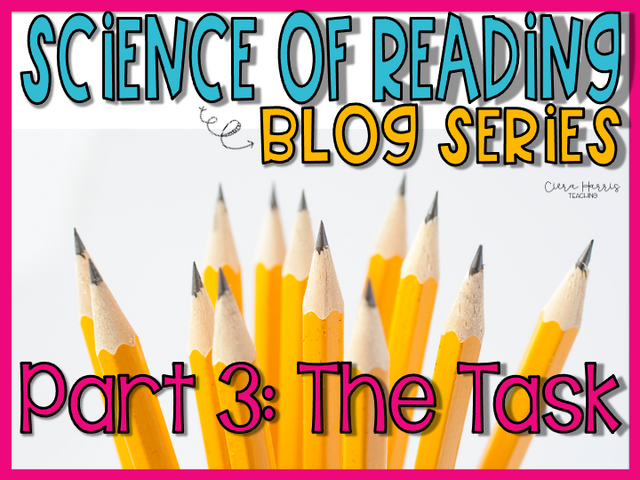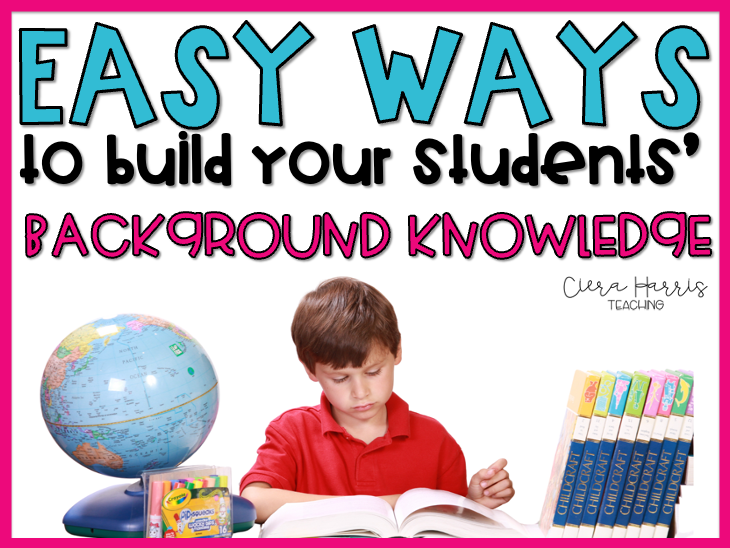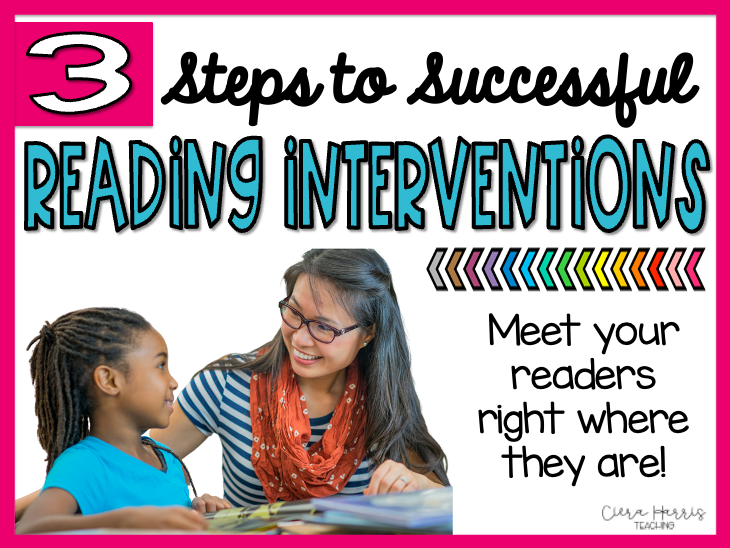Why do readers read? Specifically, your students—why do they read? As teachers, we often ask students to read something. However, are we providing them with an actual purpose for reading? Honestly, this is a crucial step to developing comprehension! Thankfully, the Science of Reading Curriculum offers fantastic insight into how to truly prepare ourselves to be the best educators we can be. So, let’s dive deeply into the SOR Series: The Task Part 3! We will explore essential components to present our students with the strongest instruction!
Want to watch the video instead? Check it out below! Make sure to subscribe to get updates on all new content!
The Reader
There are main components to remember when implementing the Science of Reading in the classroom. First, we need to analyze the reader. This may be the actual text or the student. Second, we have to analyze the task. This involves what we are asking students to do to show their learning. What we assign is a crucial component to demonstrate this learning. For example, we know that for comprehension to take place, teachers need to have some sort of purpose ready. This may be something to show very basic comprehension to needing a deeper complex understanding of the given text. Ultimately, we need to make sure we have a very clear understanding of exactly what this task will be before beginning our lessons.
Determining the Task
Every classroom has lessons presented in different ways to students with different needs. However, there are similar areas for teachers to consider when determining the best task for students. So, let’s look into these components.
1. Identify the Task
You must have clear learning objectives determined in advance. What do you want the students to achieve through the task that you’re asking them to do? Are you aiming to improve comprehension? Do you want them to use more critical thinking? Are you working on vocabulary acquisition or a combination of these? Finding your task means having clear objectives for your task choices. If you’ve ever heard that learning objectives are a waste of board space or silly, please know they are not. Having a clear objective is essential for us as educators when planning. Equally important, our students deserve to understand the purpose of why they’re reading a text.
For a great model lesson on implementing the Science of Reading curriculum, check out The Book of Gold Theme Lesson Plans and The Book of Gold!
2. Alignment with Curriculum and Standards
As you create your task, align it with your curriculum or state’s standards. Tasks should reinforce these concepts and skills that our students are to learn.
3. Understanding Different Comprehension Levels
When you’re trying to determine what task to do with your students, choose tasks that target different levels of comprehension. So, include tasks that address literal understanding, inferential understanding, and critical analysis. Additionally, select ones with synthesis of information. This is where they take all the information and draw conclusions based on it. Essentially, think about the different levels of students when selecting your tasks.
4. Mix of Question Types
This is important when planning your task! It means including various question types to engage students and prompt diverse thinking. For example, include questions that require recalling facts, making predictions, drawing inferences, comparing and contrasting, and evaluating the text. In other words, think about your Depth of Knowledge (DOK) or your Bloom’s Taxonomy levels. This way, you’re supporting all of your learners when they are completing their tasks.
For a great model lesson on implementing the Science of Reading curriculum, check out The Day You Begin Making Connections and The Day You Begin book!
5. Text- Dependent Questions
I made this one a separate point because it’s extremely important. Designing questions in your task that require students to refer back to the text for answers is essential! Sometimes we think we’re using text-dependent questions, but in reality, it may not be. Additionally, text-dependent questions technically vary from reader to reader due to memory and what they can recall. True text-dependent questions will have students go in and find multiple areas of evidence. This ensures that students engage closely with the content and develop a strong evidence-based reasoning skill set.
6. Scaffolding Support
Whenever planning out your task, it is crucial to think about scaffolding. So, consider all your student’s needs and offer scaffolding support. This includes guiding questions, graphic organizers, and sentence starters.
7. Promote Critical Thinking
Ask yourself if the task gets students to break outside the box of their basic understanding. Additionally, check to see if the lesson promotes deep critical thinking. This will help you choose tasks encouraging students to think critically, ask questions, and evaluate reliability. Students will even learn to consider different viewpoints.
8. Incorporate Discussion and Collaboration
This is huge! It is so important to include tasks that encourage peer-to-peer discussion. These interactions promote deeper comprehension by hearing other viewpoints and listening to text evidence.
For a great model lesson on implementing the Science of Reading curriculum, check out For the Right to Learn Character Perspective and For the Right to Learn book!
9. Monitor Progress and Adapt
We know this is critical. As students engage with the task, observe their responses and assess their understanding. If you notice areas of need or confusion or even areas of mastery, then be prepared to adapt your questions. Students may need additional support or special challenges.
10. Provide Opportunities for Reflection
I think many often overlook this one. We all want 10 more hours every day, but this can’t happen. However, setting aside time to reflect is vital to learning. Students need to reflect on their reading experiences and strategies used when reading. This self-awareness helps bring that metacognitive thinking we want them to use when reading. They become more effective readers over time because they’ve had the ability to reflect and improve. Best of all, it doesn’t need to be anything formal. It can be a simple reflective question or a rating scale on a sticky note. Personally, I love to use turn-in tubs in green, yellow, and red. Students turn in their tubs based on how well they think they did. It’s an excellent way for them to show their confidence level.
Honestly, there is so much to do in lesson planning! Teachers have to keep so much in mind when planning rigorous, effective, and meaningful lessons. Thankfully, keeping in mind the reader, the text, and the task will provide important guidance. Thankfully, the SOR Series: The Task Part 3 will help guide lessons while supporting all students.
Check out the rest of the SOR series!
If you do not want to miss any of the upcoming lessons, join my email list to be notified of all the interactive lessons coming up! By joining the email list, you will receive freebies for blog exclusive subscribers!










